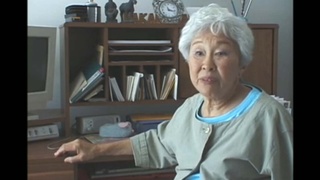Interviews
442nd’s contribution to redress
We succeeded to the extent that if it wasn’t for the 442nd there’d have been no redress. Redress was not a judicial issue no matter what anybody says. It would have never got to the Supreme Court, it a never been overruled. Maybe it should have gone back, but that isn’t in the works and isn’t the books and that isn’t the way the judicial system works. According to the judicial system, you’d have to have a similar case brought up all over again to go through the courts, and there’s not going to be another similar case. So it becomes a political issue.
And if it’s a political issue passed by Congress, then how much blood you shed and things like that count. If it wasn’t for the record of the 100th, 442nd, do you think Congress would have ever passed that? Nah. You’d have never won it on a pure logic, judicial reasoning, see. All the hard-liners would have held fast, but they can’t fight the losing of blood. And even the hard-liners when you get down to it, they say yeah, you’d be willing to Europe and fight and shed blood, but you wouldn’t fight the Japanese, see. But when you tell them about the MIS, then they have to give in, see. So yes, I say the contributions of the veterans from World War II has helped, but it hasn’t solved the problem.
Date: August 28, 1995
Location: California, US
Contributed by: Watase Media Arts Center, Japanese American National Museum
Explore More Videos

Influence of veterans
(b.1926) Democratic politician and three-term Governor of Hawai'i

Being ordered to keep a diary that was later confiscated, ostensibly by the FBI
Hawaiian Nisei who served in World War II with the 442nd Regimental Combat Team.

Mr. Finch, godfather of the 442nd
(1922–2014) Political and civil rights activist.

Importance of education in achieving redress for incarceration
(1919-2014) Activist for civil rights and redress for World War II incarceration of Japanese Americans.

Her experience as a Japanese-American schoolchild in Oceanside, California, after the bombing of Pearl Harbor
(1924-2018) Artist and playwright.

442 soldiers visiting U.S. concentration camps
(b. 1924) Political scientist, educator, and administrator from Hawai`i

Teaching at the military language school during World War II
(b. 1924) Political scientist, educator, and administrator from Hawai`i

Change in attitudes after World War II
(b. 1924) Political scientist, educator, and administrator from Hawai`i

Denied redress as a Japanese Peruvian
(1930-2018) Nisei born in Peru. Taken to the United States during WWII.

Receiving a negative reaction from father upon asking about World War II experience
(b. 1939) Japanese American painter, printmaker & professor

Loss of happy-go-lucky adolescence in Puyallup Assembly Center
(b. 1923) Nisei from Washington. Resisted draft during WWII.

Memories of dusty conditions at Minidoka incarceration camp
(b. 1923) Nisei from Washington. Resisted draft during WWII.

Making the decision to resist the draft
(b. 1923) Nisei from Washington. Resisted draft during WWII.

Thoughts on redress
(b. 1923) Nisei from Washington. Resisted draft during WWII.

Redress Movement in Canada
(b.1924) Japanese Canadian Nisei. Interpreter for British Army in Japan after WWII. Active in Japanese Canadian community
